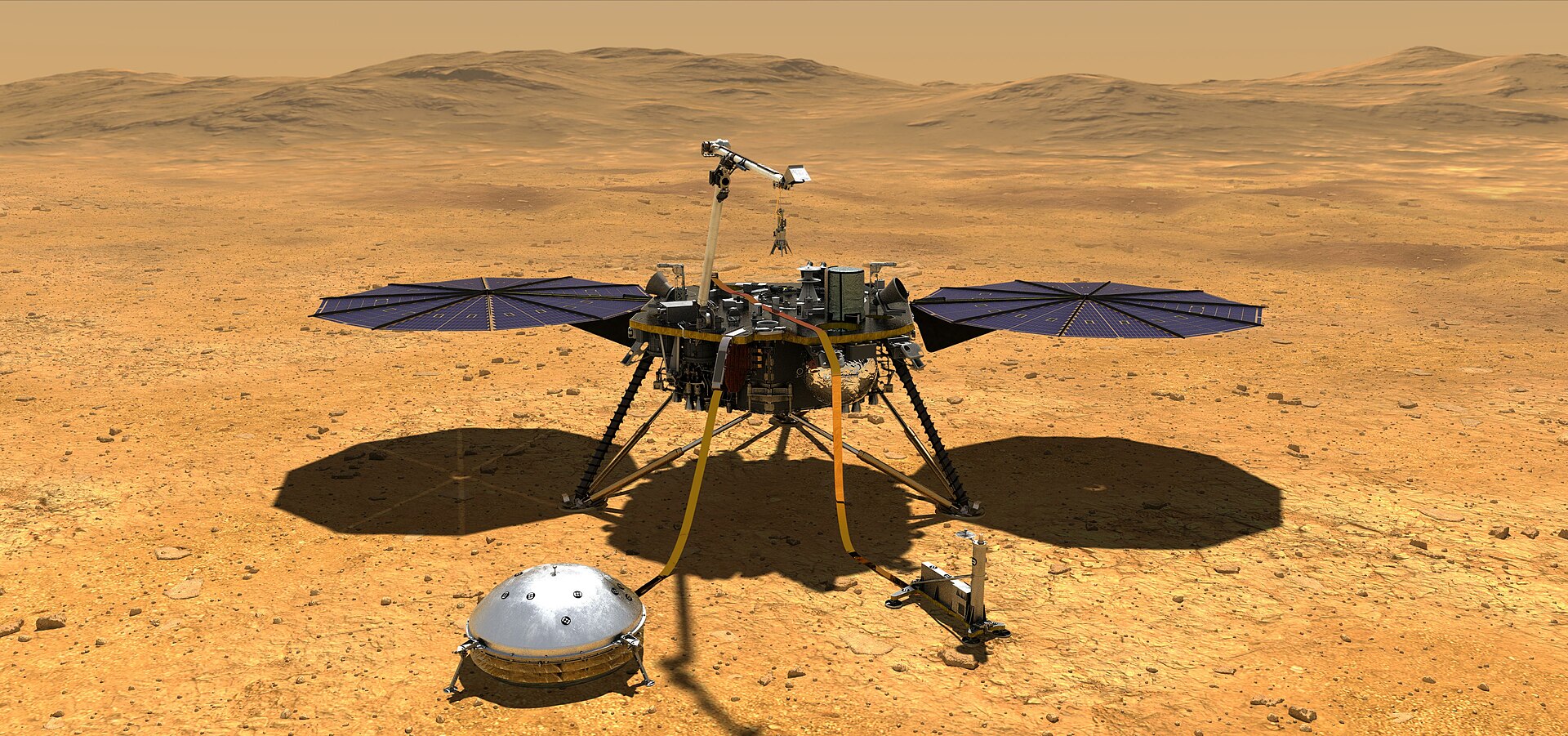NASA has discovered a huge reservoir of liquid water beneath the surface of Mars. It is so much that it can fill an ocean. There are cracks in the rocks several kilometres below the surface. There is so much liquid water between these cracks that if they are collected, an ocean can be formed. NASA has done this calculation with the data received from InSight Lander.
Table of Contents
A huge amount of water is present at a depth of 11.5 to 20 kilometres from the surface of Mars. There is also a possibility of small microorganisms in it,or they may have existed earlier. Planetary scientist Vashan Wright of Scripps Institution of Oceanography, University of California, San Diego, and his team have done this study.
Vashan said that the upper layer of Mars, i.e. the crust, creates such an environment at such a depth that liquid water can accumulate in it. Whereas at shallow depths it freezes and turns into ice. This study of Vashan and his colleagues has recently been published in the Proceedings of the National Academy of Sciences.
Revealed by the ability of Insight Lander

Vashan’s fellow researcher Michael Manga said that we have discovered microorganisms at such depths on Earth as well. Where there is saturation of water. There is no energy source either. But the Earth is so hot that life can flourish. NASA’s Insight Lander landed on the surface of Mars in the year 2018. So that it could study its insides.
This lander helped in mapping the inner layers of Mars with its seismic waves. Vashan said that by studying its data, he has concluded that a large amount of water is stored under Mars. These waves change when they pass through any object.
It can fill an Ocean

When waves pass through rocks, they behave differently. When they pass through water, they behave differently. It becomes clear where the cracks are. By studying these waves, Vashan and his team found out how much water there is and at what depth. This is how large sources of water, oil and gas are discovered on Earth.
There is water everywhere in the cracks of rocks at a depth of 11.5 km to 20 km on Mars. This water has collected there after the lava cooled down. If all this water is collected, then a 1 to 2 km deep ocean can be filled on the surface of Mars. That too on the entire planet. Not just in one place.
Read Also : Starliner Spacecraft : What’s wrong with Boeing’s Starliner Spacecraft?
Rivers and Lakes of Water on early Mars

Right now the surface of Mars is cold. It is a desert. But it used to be hot and wet. But this changed 300 crore years ago. The study shows that the water present on Mars did not disappear into space. Rather it got filtered through the crust layer and got collected inside. There were rivers and lakes of water on early Mars. Possibly there would have been oceans as well. This discovery has raised the hope that a human colony can be built on Mars for a long time with the help of water.
What is InSight Lander

The full name of InSight is ‘Interior Exploration Using Seismic Investigations, Geodesy and Heat Transport‘ (InSight). The InSight lander mission is the first mission dedicated to detailed study of the Martian surface. The InSight lander sent to study Mars landed on the surface of Mars on November 26, 2018.
For detailed studies, this mission carries a seismometer, a sensor to measure air pressure, a magnetometer and a heat flow instrument to study the temperature of the planet. The InSight mission is part of NASA’s Discovery Program-1992.
Study of InSight Lander
NASA/JPL-Caltech/CNES/IPGP/Imperial College/Cornell
- According to the study done by Insight Lander, there are more vibrations on Mars than expected, but these vibrations are quite mild. This conclusion has come out from the study done by the ultra-sensitive seismometer.This instrument enables scientists to ‘learn’ vibrational events from hundreds to thousands of miles away.
- Mars does not have tectonic plates like Earth, but it does have volcanically active regions that may cause tremors.
- The seismometer has so far received more than 450 vibration signals and according to scientists, most of these are indicators of earthquakes. Apart from this, many signals have also been generated by environmental factors of Mars such as wind.
- According to the study, billions of years ago, a magnetic field existed on Mars, although it is no longer present, but due to this some magnetic rocks have remained beneath the surface of the planet. InSight’s magnetometer has detected indicators of these magnetic rocks.





